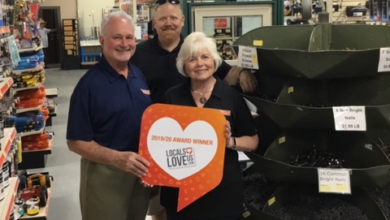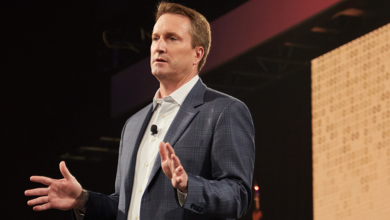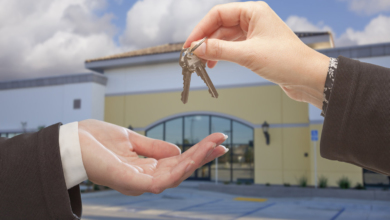10 Reasons To Be Optimistic About Retail After COVID-19
By Bob Phibbs, The Retail Doctor

1. Retail employees are gaining respect. Albertson’s is pushing to classify its employees as first responders, giving them priority for testing and protective gear. The nation’s largest employers are turning to thermometers as a new line of defense against the coronavirus including Walmart, Home Depot and Starbucks. While health experts warn temperature checks are an imperfect tool, these actions by employers help keep their employees on-site and healthy. It is a visible change of the old model that employees were essentially disposable and could easily be replaced. And their communities are seeing them as heroes.
2. The spotlight is on small business. Shoppers are now realizing just how much they will miss them if they don’t reopen. We are far from out of the woods, but one thing is clear, buying local has been elevated. With the world of retail stores now closed, customers are aware of just how much they will miss those businesses if they don’t re-open and not just small retailers but downtown Main Streets and even shopping malls.
3. Change acceleration. While much has been written—almost ghoulishly—about the potential death of scores of retailers, this crisis will allow larger chains to initiate the very hard decisions of shrinking their footprint. I read one guy who said it was time to liquidate Macy’s, but I scoffed at the notion.
This is the brand that has its own parade through the greatest city in the U.S., and it’s covered live around the world. Macy’s is the centerpiece of Miracle on 34th Street, the movie that comes out each year at the exact moment people are shopping for the holidays. Macy’s isn’t going away. They, and other bloated retailers, can now simply close hundreds of stores they have been needing to. Yes, it will be painful, yes it will affect entire shopping districts, but it will allow them to live another day and do a better job. Can you imagine if the experience in Macy’s became like the ones in Miracle on 34th Street? Who’d be winning then? Everyone from shareholders, to employees, to you, the consumer.
This crisis will also help us get us past having too many retailers without enough demand to supply them all. Before another round of creative refinancing comes, the executives should have to answer these hard questions: Are we able to deliver a branded experience in this new world of consumerism and can we be brilliant on the basics to deliver it?

4. This crisis has unlocked creativity. Corporations world-wide have moved fast in the fight against the coronavirus. Dyson created a portable ventilator; brands as diverse as Nordstrom, Brooks Brothers and Chanel are making masks, and a host of local distilleries have begun making hand sanitizer seemingly overnight. Innovation and creativity were unleashed as these brands easily saw the need. That same spirit of innovation will have to be used to engage a weary customer…and it won’t happen over Zoom.
5. Social media wins. While just a few months ago, we were railing on Facebook’s privacy—or lack thereof—Facebook has become the lifeline for many. Clearly, it isn’t just about what you had for lunch. The NYT reported phone calls over Facebook’s app more than doubled. In many countries, messaging on Instagram and Facebook soared by over 50 percent, while group calls in Italy jumped by more than 1,000 percent. People clicked repeatedly on virus news stories shown by the social network. Small businesses found doing Facebook Live videos provided a lifeline of business at a time many were closed to browsing.
6. Social distancing worked. For the most part, businesses and individuals chose to forgo going out so hospitals could administer to the sick and the curve could be flattened. Humanity, empathy and compassion won out.
7. Retail employees will respect their jobs. With 30 million filing for unemployment in the U.S. in April alone and the unemployment rate jumping from 3 percent to 13 percent, many will feel grateful for being able to go back to work.
8. But retail stores will have to actually give a damn about customer service. Let’s face it, many retailers, small businesses and service providers got sloppy. They assumed, wrongly, that another 100, 1000 or 10,000 people would be coming through their doors next week. Until they didn’t. Customer service will have to become something more than a set of values stuck on a wall. As customers return, they will need to be cared for in a more genuine and authentic way than just hearing a disengaged greeter at the door say, “Can I help you find something?”
9. Beginning of a new cycle of innovation. I heard about a restaurant limited to take-out only that wanted to bring the personality of their business back to life. They installed an app and two TVs—one with a camera focused on the kitchen and one over the cash register. Now whenever someone wants to order online, they can chat virtually with their regular servers in a two-way visual communication. We will have to find ways to connect and this will take training in a virtual world that is bound to last past our self-imposed lockups.
Another innovation that will become the norm is the contactless credit card as consumers and businesses understand that “Paper money can carry more germs than a household toilet.” Consumers will want to tap and pay using their credit cards or smartphones, and not insert or stripe them. And cash is definitely going away.
10. Online isn’t invincible. Yes, Wayfair sales got a 20 percent bump in March. Does that mean everyone suddenly decided to buy furniture online over brick and mortar? No, those competitors were shuttered, so Wayfair had a much more open space to play. Don’t forget, as CNBC reported last year, Wayfair spent $196 each on its 3.6 million new customers. While people love to talk about the brick and mortar retail apocalypse, everything is not rosy with online. Many of these disruptors will continue to be found not sustainable.
And while online shopping has increased substantially in the past few weeks, look closer at the numbers and you find that grocery is the clear leader because people have to, not necessarily because they want to, go online
In Summary
I read one person’s opinion who thinks we are about to be gaslighted; marketed into believing what we just went through was nothing and we will be told to just go out and buy more.
Let me be clear: People buy based on hope in the future.
The guy who wants to get the gal, the female who just moved to a new town, the man who got a divorce and wants to lose weight—you name it. Those reasons still exist for us, now more than ever.
We Have Short Memories
Y2K was supposed to render all computers and systems inoperable.
It was barely 20 years ago that we couldn’t imagine a 9/12.
Barely over 10 years ago we were told the ATM machines might not work.
Now we are watching New Yorkers stand on their balconies and clap for health care workers each night at 7 p.m.
When we come out of this, that compassionate spirit of we, not me, has to continue. It is rooted in optimism. And it starts with you.

Bob Phibbs is the Retail Doctor; a speaker, author of three books and retail sales expert of choice for some of the most legendary retail brands including, LEGO, Omega and Yamaha. With over 30 years’ experience, beginning in the trenches of luxury retail and extending to senior management positions, he has been a corporate officer, franchisor and entrepreneur. He and his work have appeared in the New York Times and the Wall Street Journal. He is one of the top retail influencers in the world. To register for a free set of 8 lessons on how to retail during time of COVID-19, click here.

Subscribe for Free
The Hardware Connection is a digital magazine targeted to independent hardware/home improvement retailers. It is the only industry magazine designed and distributed solely in electronic format and currently reaches over 60,000 people in the two-step channel.
The Hardware Connection publishes four Newsletters each year in addition to eight magazine issues.
To sign up yourself or additional staff to a free subscription to receive The Hardware Connection magazine and newsletter in electronic format, please click here.







